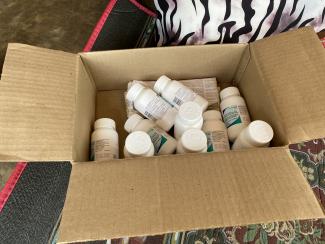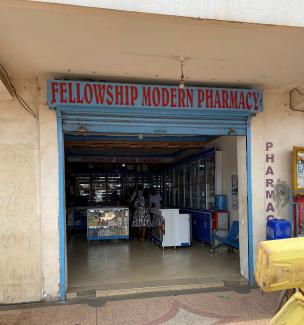Authors: Jacqueline Calnan, USAID/ Uganda; Dr. Esther Nkolo, USAID/ Uganda; and Dr. Immaculate Ddumba, USAID/Uganda
In many low- and middle-income countries, long lines at public facilities, faraway distances of health care facilities, social stigma, and lack of funds for transportation are common barriers for individuals seeking HIV treatment. When patients do make it to the public hospital for an appointment, they often face overcrowding, with hospital staff stretched thin and unable to spend adequate time with each patient.
Moreover, those people living with HIV must also make frequent visits to pick up their HIV medication, sometimes on a monthly basis. Again, the long wait times, stigma, lack of transportation, and inability to take time off from work all add up with each needed visit, contributing to keeping people living with HIV from picking up their medication on time. All too often this results in treatment interruptions, which in turn can increase illness and increased risk of HIV transmission to partners.
In order to minimize these barriers and increase flexibility and convenience for people living with HIV, USAID provides differentiated service delivery (DSD), a method which seeks to tailor care to meet the individual’s unique needs. Multi-month drug dispensing and decentralized drug distribution – described in detail below – are two person-centered strategies that help minimize the burden for both patients and health care systems by reducing the frequency of visits to health facilities and allowing clients to pick up medication closer to their homes.
Through decentralized drug distribution, USAID and its partners create additional places for medication refills and pickup, like community pharmacies or automated lockers. Increasing the number of locations where people living with HIV can pick up their medication further decreases the burden on crowded health facilities and allows the choice of a convenient pick-up location for the person getting the medicine.
Multi-month dispensing allows clinicians to prescribe three or more months of HIV medication at a time rather than just once a month. Typically, people who are virally suppressed (meaning that the HIV virus cannot be detected in their body because they are taking their medication daily and on time) are eligible to receive three months or six months of HIV medication at a time.
Achieving sustained HIV epidemic control will not be possible without continuing to ensure that people are able to access and adhere to their HIV treatment. USAID/Uganda recognizes that it is critical for individual expectations, needs, and preferences to be taken into account when providers discuss with someone how they wish to receive their HIV medication.
The USAID Office of HIV/AIDS, in collaboration with USAID/Uganda, developed a quality improvement tool to help providers in Uganda determine whether their patients were receiving their HIV medication in the way that they preferred.
The tool also determines whether the patient is connected to a community health worker for monthly follow-up support. If not, they are asked how they would like to be connected with a community health worker for monthly follow-up support.
“We saw that when patients were attached to a community health worker, they were more likely to adhere to their medication because the community health worker could help them to reschedule their medication pick-up if needed or even bring the medication refill to [their] home,” said Dr. Immaculate Ddumba, program management specialist for community health systems, USAID/Uganda.
The survey was administered to 6,234 people living with HIV (including caretakers of pediatric clients) at 113 health centers in Uganda. It found that 25% of patients were not using their preferred DSD model, and that those patients had lower rates of virologic suppression and higher rates of missed appointments as compared to those who used their preferred DSD model. People who reported not being in their preferred DSD model were then enrolled into it and are now more easily able to receive their HIV medication and adhere to their HIV treatment plan.
Dr. Ddumba notes that the tool is not for one-time use only. “Health care workers use the tool every time they meet with a [patient] to see if their preferences have changed. If so, the healthcare worker can ensure they remain in their preferred treatment model.”
The USAID/Uganda team hopes that the partnership with the Uganda Ministry of Health will lead to rolling out the tool on a national scale. “If we can collect this information about preferred treatment models on a national level, we will be able to look for patterns and note how often patients change their preferences and why and which treatment models are most preferred. This information will help us to improve HIV treatment for all,'' said Dr. Ddumba

USAID

USAID
